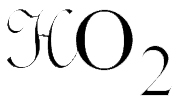What is hyperbaric oxygen therapy (HBOT)?
Hyperbaric oxygen therapy involves breathing pure oxygen with a mask in a pressurized environment. Mild HBOT at 1.3 atmospheric pressure (atm) is very effective for healing damaged tissues that are not functioning at optimum. Under these conditions, your lungs can gather much more oxygen than would be possible breathing pure oxygen at normal air pressure. Even without the additional oxygen, breathing room air at increased pressure has proven very beneficial in double blind studies.
Why is it done?
Your body’s tissues need an adequate supply of oxygen to function properly. When tissue is injured, it requires even more oxygen for healthy function. Hyperbaric oxygen therapy increases the amount of oxygen your blood can carry. With repeated therapy sessions, the temporary extra high oxygen levels encourage the normal tissue oxygen levels needed for health, even after the therapy is completed.
General benefits of Hyperbaric Oxygen Therapy
- Increases energy production in the cell
- Decreases inflammation
- Speeds wound healing
- Inhibits bacterial and viral infections
- Stimulates new blood vessel formation
- Stimulates stem cells, especially in the central nervous system
- Assists the immune system
- Increases antioxidant production
- Stimulates collagen formation
- Improves cellular communication
- Increases serotonin
- Improves healing and recovery from traumatic brain injuries – even years after the trauma
- Calms the nervous system
- Reduces cancer agression, tumor size and numbers
The main benefits of HBOT are achieved through the cumulative effect and the increasing and decreasing — the wave of hyper-oxygenation back to normal oxygen levels, creating a hyperoxia-hypoxia type paradox. Both stimulate beneficial changes.
The biggest benefit is increased tissue and cellular oxygen which promote healing and function, even in deep tissue where circulation may be inadequate because dissolved oxygen goes anywhere water goes and can reach every cell.
The goal is to fill the blood with enough oxygen to repair tissues and restore normal body function.
Severe conditions that benefit:
As of July 2021, the FDA has cleared hyperbaric chambers for the following disorders (insurance only pays for these):
- Air and gas bubbles in blood vessels
- Anemia (severe anemia when blood transfusions cannot be used)
- Burns (severe and large burns treated at a specialized burn center)
- Carbon monoxide poisoning
- Crush injury
- Decompression sickness (diving risk)
- Gas gangrene
- Hearing loss (complete hearing loss that occurs suddenly and without any known cause)
- Infection of the skin and bone (severe)
- Radiation injury
- Skin graft flap at risk of tissue death
- Vision loss (when sudden and painless in one eye due to blockage of blood flow)
- Wounds (non-healing, diabetic foot ulcers)
Conditions that benefit:
HBOT is indicated for at least 100 different conditions.
- Adrenal fatigue / Chronic stress
- Allergies (airborne and chemical)
- Anti-aging / Longevity
- Arthritis
- Autism / ADD / ADHD
- Autoimmune conditions
- Bowel function / Intestinal bacteria
- Cancer therapy adjunct
- Circulation – new blood vessel formation
- Collagen formation
- Dementia / Alzheimer’s
- Depression – increases serotonin
- Detoxification
- Diabetes / Diabetic wounds
- Heart attacks (recovery and prevention)
- Immune system / Infections
- Inflammation
- Lyme’s disease
- PTSD
- Sports injuries
- Stroke rehabilitation and prevention
- Traumatic brain injury
- Wound healing
What are the risks and side effects?
Hyperbaric oxygen therapy is generally a safe procedure. Complications are rare for low pressure HBOT. The most common side effects of low pressure HBOT are popping ears and detoxification. symptoms. You also may feel fatigue after a session. If you are an insulin dependent diabetic, your blood sugar may decrease.
Risks for high pressure HBOT:
Potential risks include:
- Middle ear injuries, including leaking fluid and eardrum rupture, due to changes in air pressure
- Temporary nearsightedness (myopia) caused by temporary eye lens changes
- Lung collapse caused by air pressure changes (barotrauma)
- Seizures as a result of too much oxygen (oxygen toxicity) in your central nervous system
- Lowered blood sugar in people who have diabetes treated with insulin
- In certain circumstances, fire — due to the oxygen-rich environment of the treatment chamber
What if I have ear problems?
We increase and decrease the pressure slower so your ears have time to adjust to the pressure.
Do not do HBOT when you have congested ears or sinuses.
Therapy Sessions
Sessions are 60 minutes long.
It is recommended to do at least 10 sessions over 2-3 weeks. How frequently you do them is determined by the amount of detoxification that is happening. Once or twice a month maintenance HBOT is beneficial.
What can I do to increase the benefits?
Take antioxidant, enzyme and electrolyte supplements. Drink lots of fluids. Detoxification herbs can help. Bring your headphones and listen to relaxing music during a session.
Facts about hyperbaric oxygen therapy
Hyperbaric oxygen therapy was first used in the U.S. in the early 20th century. This was when Orville Cunningham used pure oxygen to successfully treat someone dying from the flu. He developed a hyperbaric chamber, but dismantled it after his use of the therapy for other conditions failed.
The therapy was tried again in the 1940s when the U.S. Navy used hyperbaric oxygen to treat deep-sea divers who had decompression sickness. By the 1960s, the therapy was also used to combat carbon monoxide poisoning.
Today, it’s still used to treat sick scuba divers and people suffering from carbon monoxide poisoning, including firefighters and miners.
